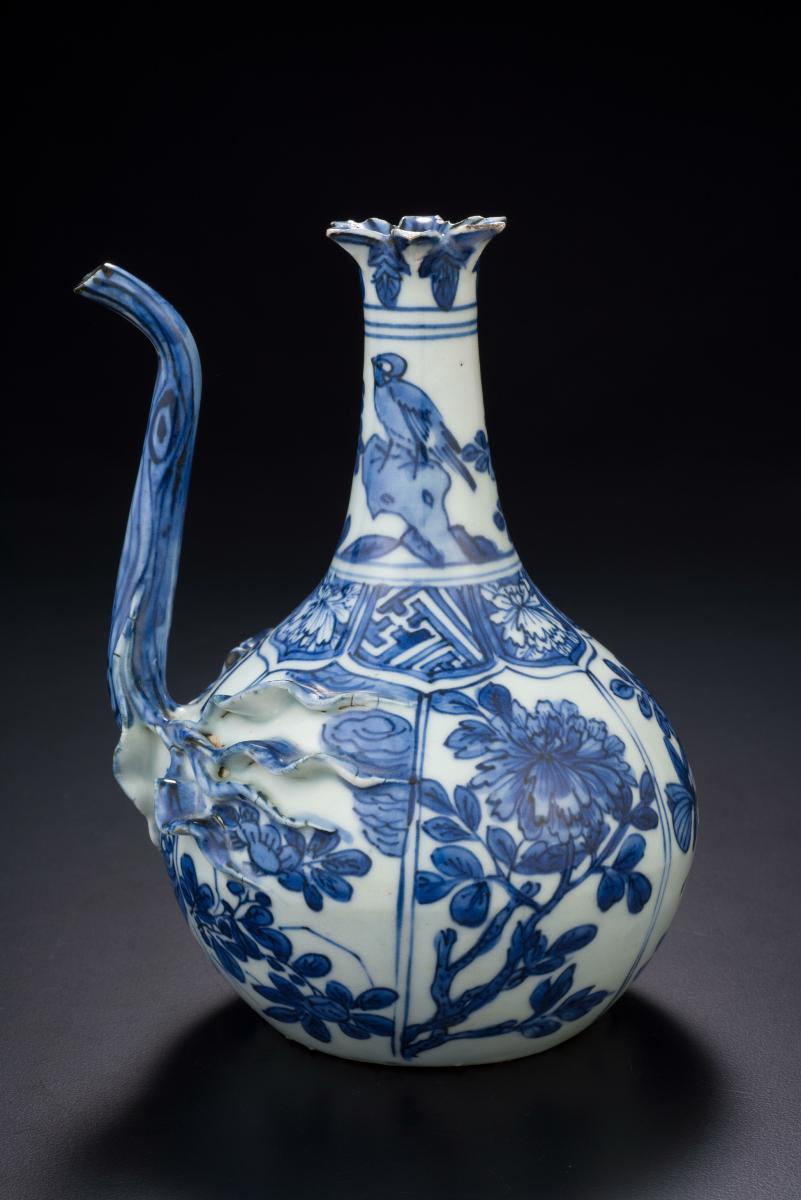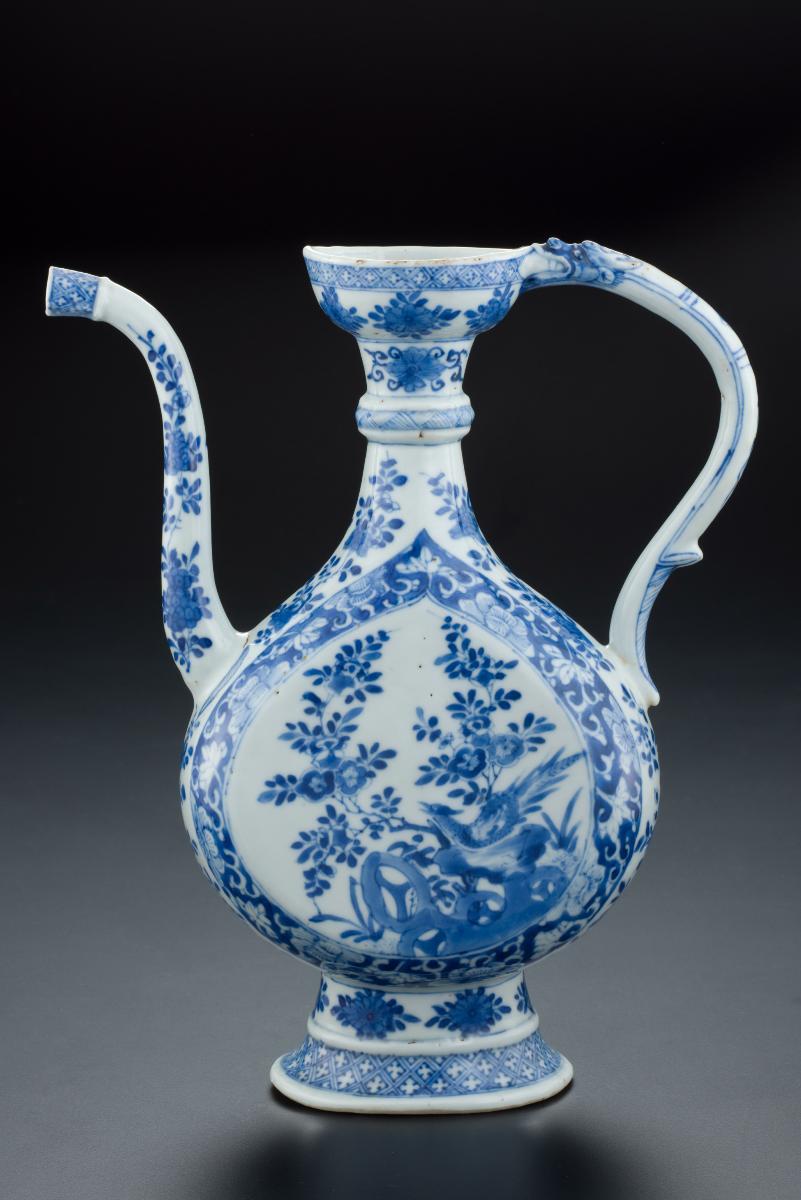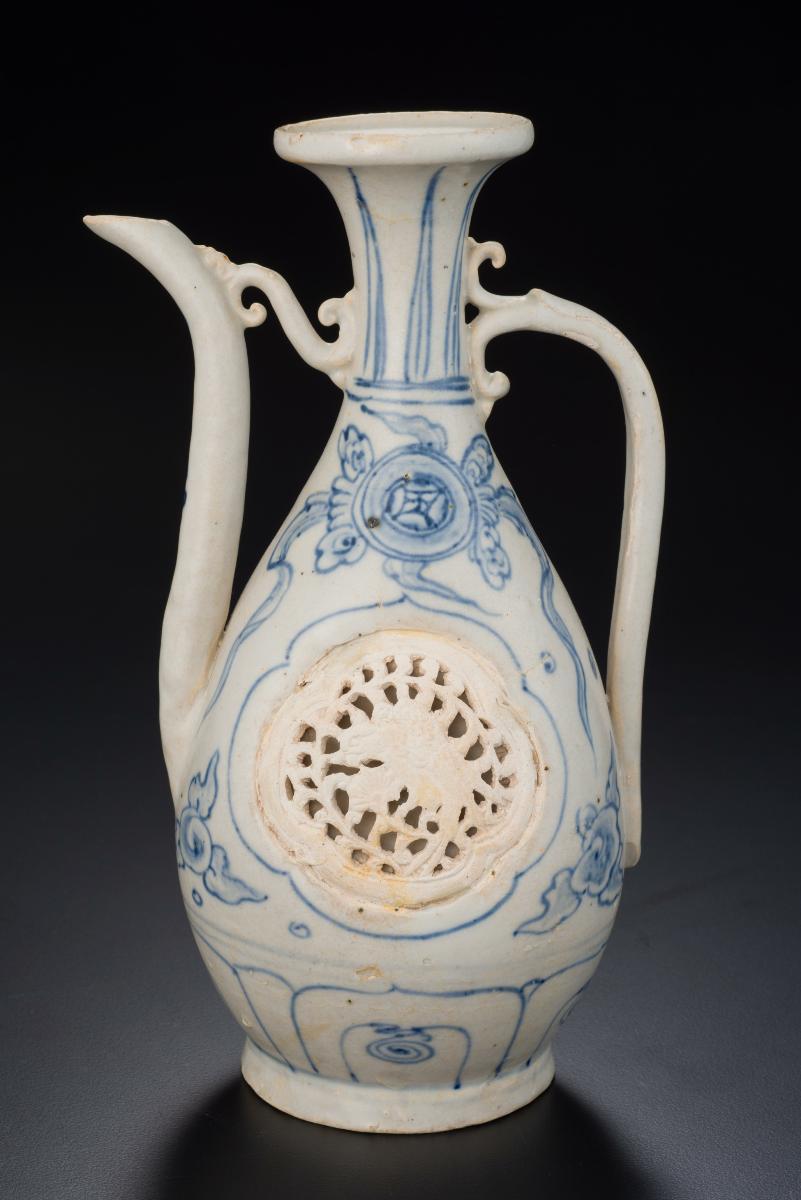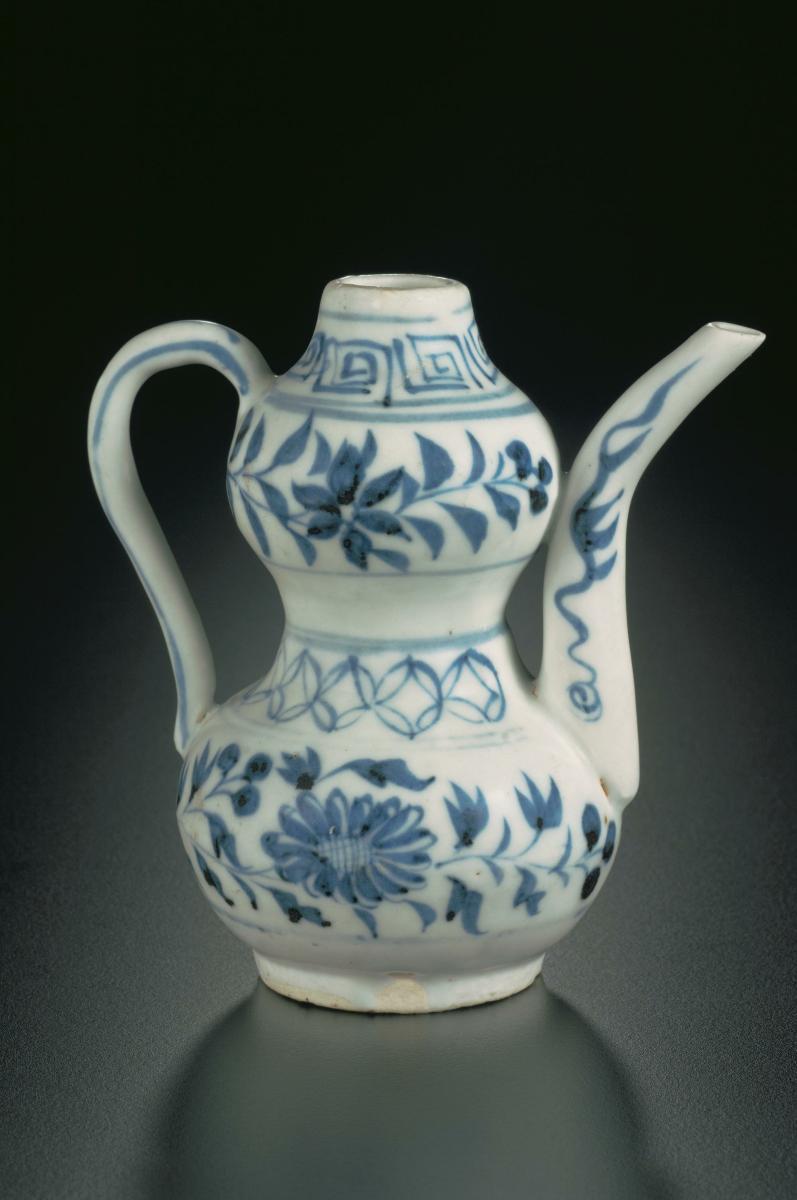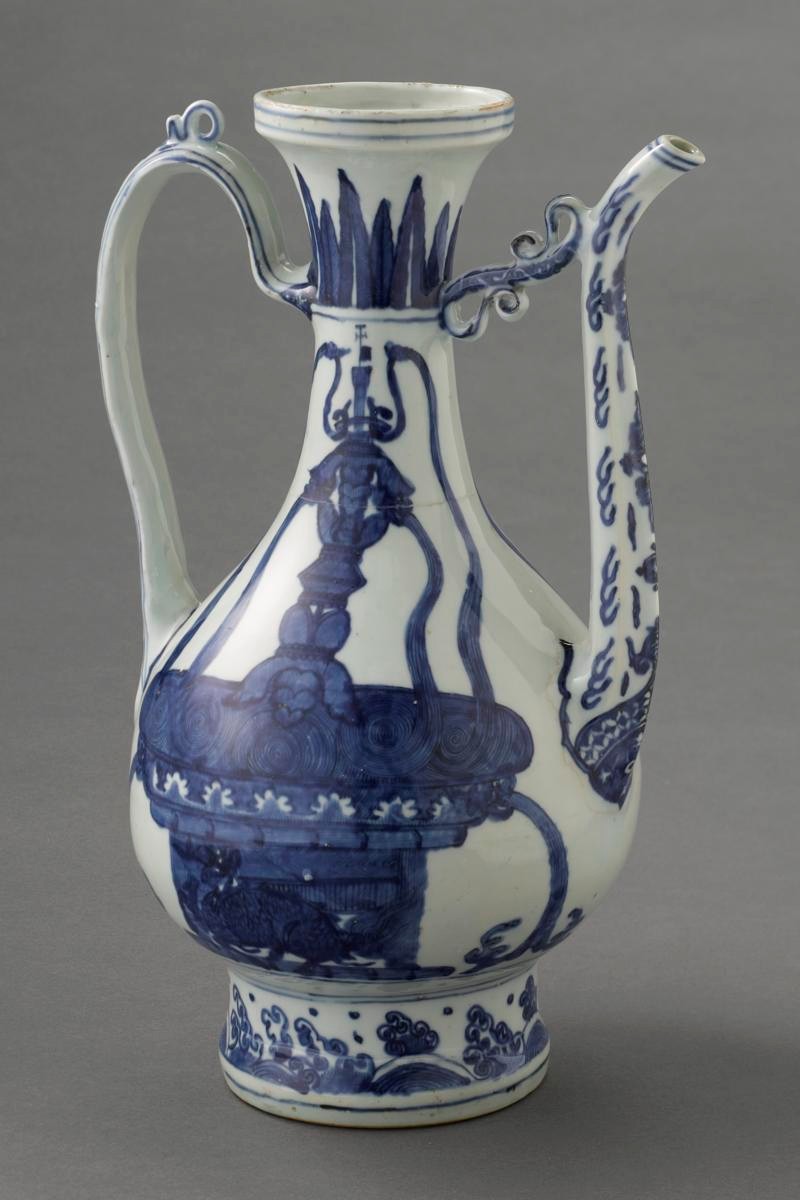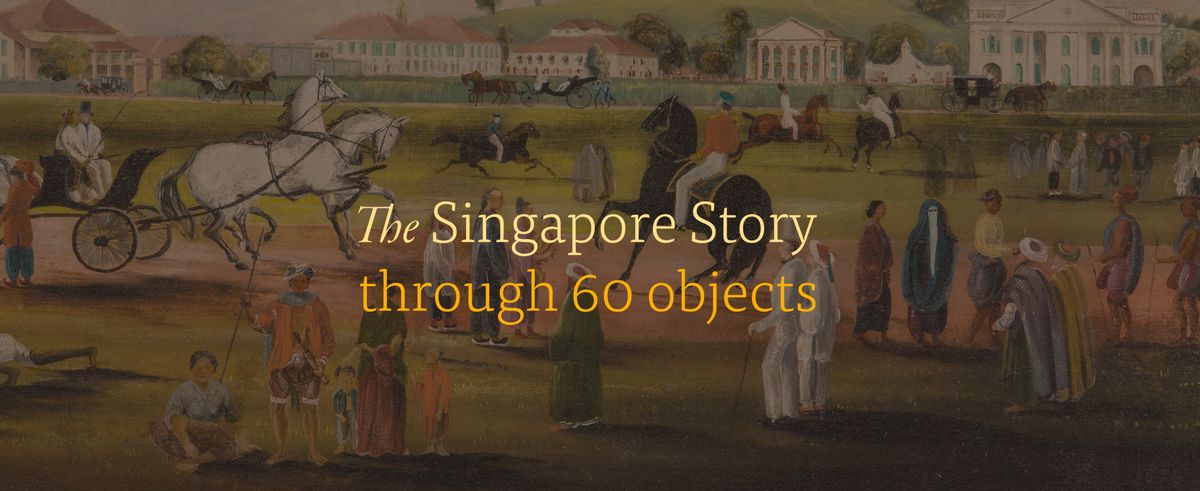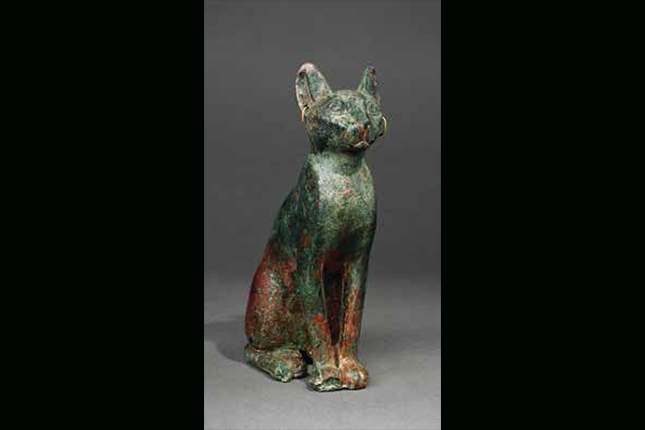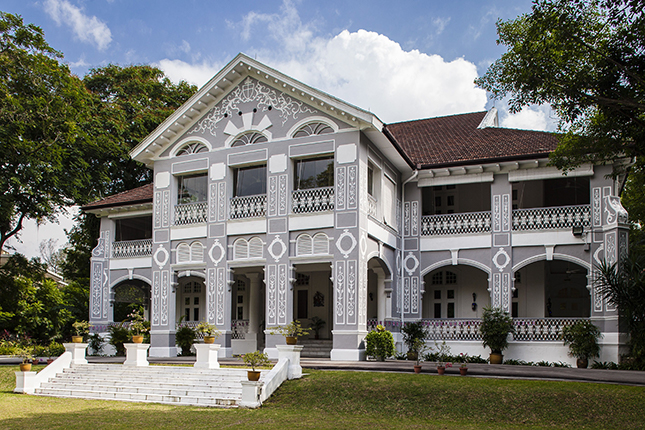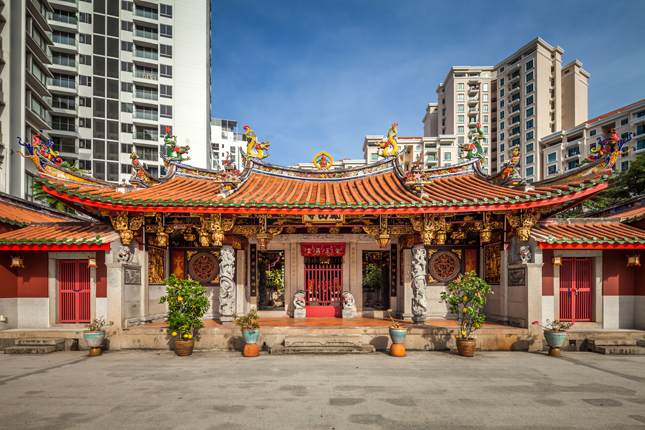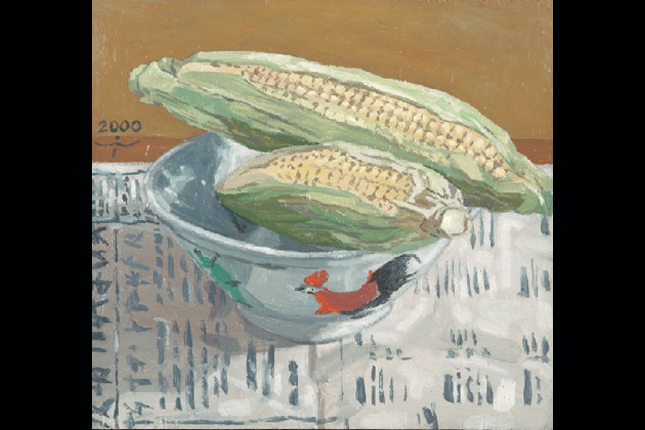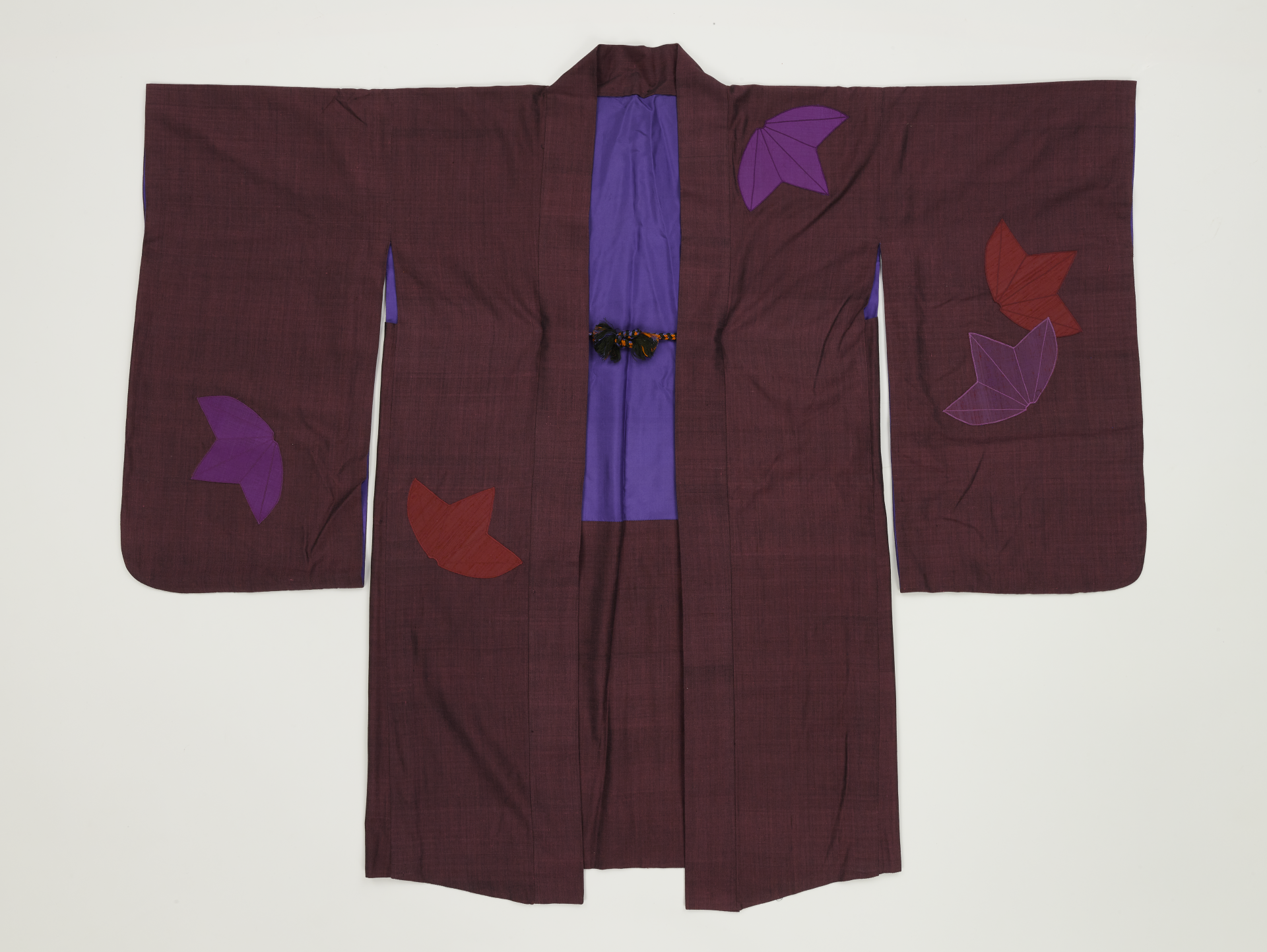This ewer painted in underglaze cobalt blue has a globular body and is decorated with panels containing various floral motifs. The long spout is curved at the end and is decorated with relief molded branches joining the globular body. It is also known as the ‘pomegranate ewer’, owing to the distinctive star-shaped mouth rim that resembles the tip of a pomegranate fruit. In China, pomegranate (shi-liu), which is full of seeds, symbolizes fertility. This type of kendi belongs to a special group of kraak pouring vessels that first appeared in the Wanli period (1573 – 1620). The ewer is thinly potted, in contrast to the conventional heavier potted kendis.




